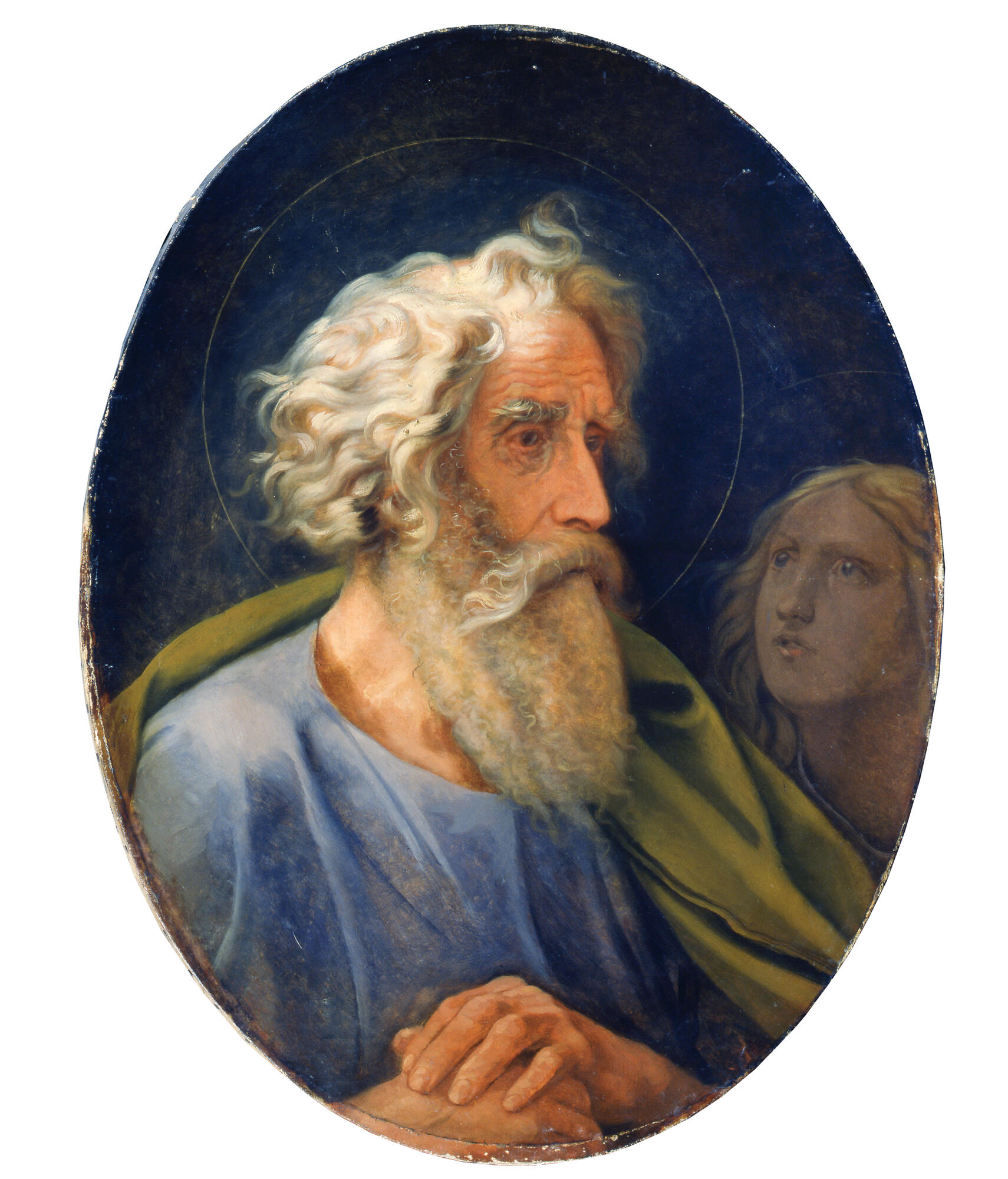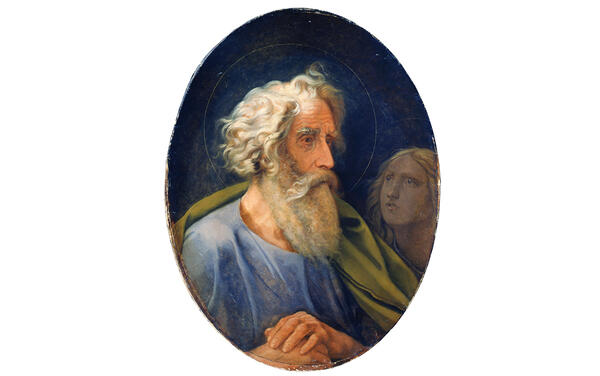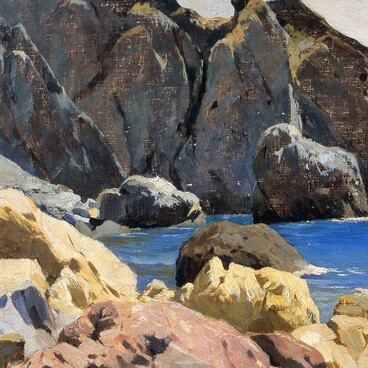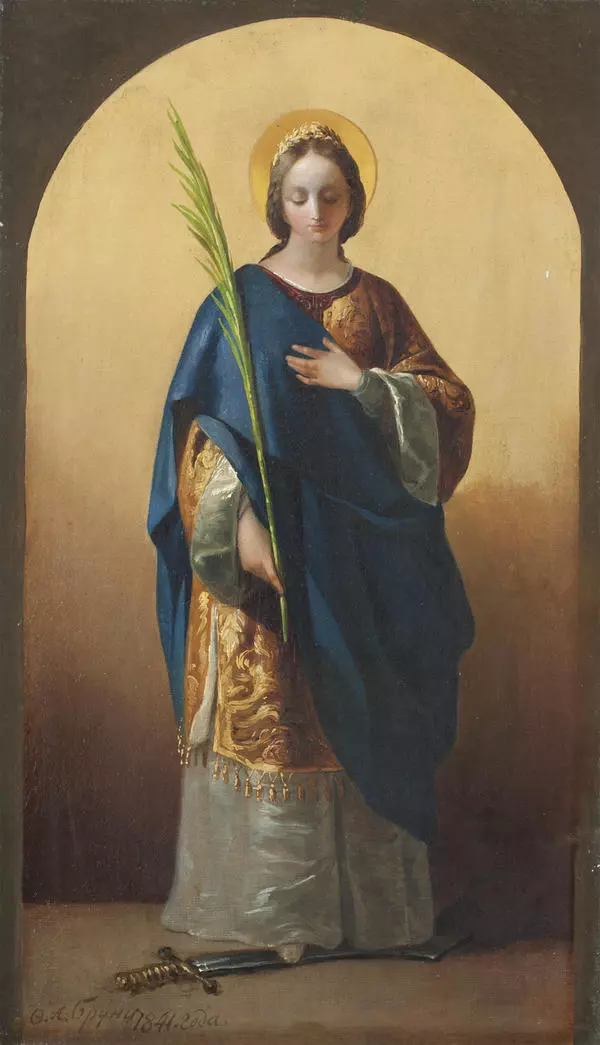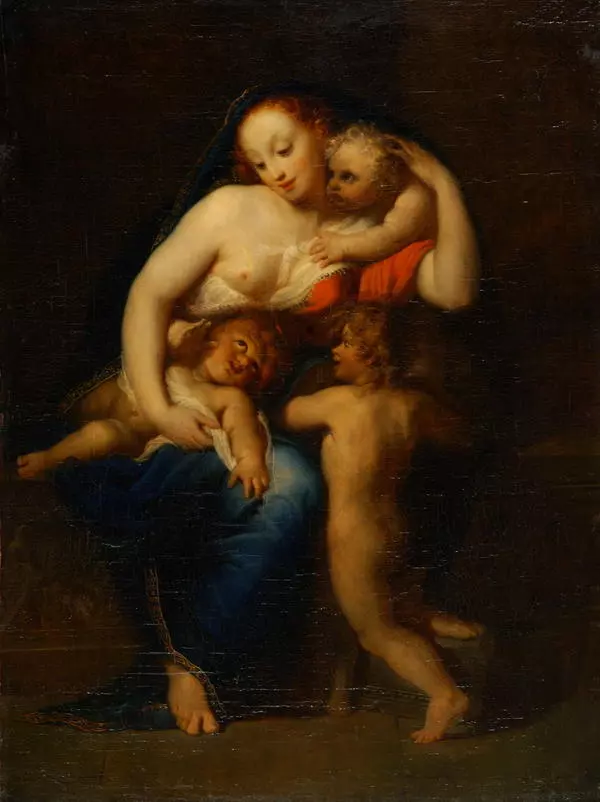Fyodor Bruni was born on June 10, 1799, in Milan, into the family of an Italian Swiss artist, painter and art restorer Antonio Bruni. In 1807, the family moved to St. Petersburg, and a couple of years later, ten-years-old Fyodor enrolled at the Higher Art School of the Academy of Arts, where he studied painting under the guidance of classicist masters — Andrey Ivanov, Alexey Egorov and Vasily Shebuev.
From 1818 to 1841, Bruni lived in Italy for the most part, that’s when the Italian Renaissance art became his main interest. In Rome, he joined Princess Zinaida Volkonskaya’s circle. In 1820, the artist painted a portrait of Zinaida in the costume of Tancred, the main character of the poem ‘Jerusalem Delivered’ by Torquato Tasso. At the age of 25, Bruni rose to fame with the Roman work ‘Death of Camilla, Sister of Horatius’, which he painted in a classicistic manner in 1824. Contemporaries noted his ‘perfect drawing and composition skills’.
In the early 1830s, the artist began to paint a large canvas ‘The Brazen Serpent’, but did not have time to finish it: Bruni was summoned from Rome to St. Petersburg to paint Saint Isaac’s Cathedral. There are 25 cartoons, created by Bruni during the painting of the cathedral in 1841–1845, as well as many studies for the “Chess Hall” of the Hermitage and the Cathedral of Christ the Savior in Moscow.
In 1836, Bruni was awarded the title of professor at the Academy of Arts, and in 1855, he became its rector. In 1849–1864, he was the Custodian of the Hermitage Picture Gallery, and in 1866, he was appointed Director of its mosaic department.
Fyodor Bruni was known as a master of monumental and decorative art. He continued the stylistic traditions of the Renaissance art in his works. In the late period of his creative work, the artist was faced with the fact that the new generation did not accept his paintings, calling his style “dry eclecticism”. However, later critics recognized his works as the best examples of painting, which laid the foundation for symbolism. Bruni died on August 30, 1875, in St. Petersburg.
Bruni portrayed Matthew the Apostle chest-length. The body and head of the saint are turned more than three-quarters, the hands are folded at the chest, and a narrow nimbus is seen around the head. The oval-shaped portrait is typical for traditional icon painting. Bruni created a painting using the academic drawing technique with a well-arranged color palette and true light depiction. This brings his work closer to the canons of the Italian school, which were his main influences.
From 1818 to 1841, Bruni lived in Italy for the most part, that’s when the Italian Renaissance art became his main interest. In Rome, he joined Princess Zinaida Volkonskaya’s circle. In 1820, the artist painted a portrait of Zinaida in the costume of Tancred, the main character of the poem ‘Jerusalem Delivered’ by Torquato Tasso. At the age of 25, Bruni rose to fame with the Roman work ‘Death of Camilla, Sister of Horatius’, which he painted in a classicistic manner in 1824. Contemporaries noted his ‘perfect drawing and composition skills’.
In the early 1830s, the artist began to paint a large canvas ‘The Brazen Serpent’, but did not have time to finish it: Bruni was summoned from Rome to St. Petersburg to paint Saint Isaac’s Cathedral. There are 25 cartoons, created by Bruni during the painting of the cathedral in 1841–1845, as well as many studies for the “Chess Hall” of the Hermitage and the Cathedral of Christ the Savior in Moscow.
In 1836, Bruni was awarded the title of professor at the Academy of Arts, and in 1855, he became its rector. In 1849–1864, he was the Custodian of the Hermitage Picture Gallery, and in 1866, he was appointed Director of its mosaic department.
Fyodor Bruni was known as a master of monumental and decorative art. He continued the stylistic traditions of the Renaissance art in his works. In the late period of his creative work, the artist was faced with the fact that the new generation did not accept his paintings, calling his style “dry eclecticism”. However, later critics recognized his works as the best examples of painting, which laid the foundation for symbolism. Bruni died on August 30, 1875, in St. Petersburg.
Bruni portrayed Matthew the Apostle chest-length. The body and head of the saint are turned more than three-quarters, the hands are folded at the chest, and a narrow nimbus is seen around the head. The oval-shaped portrait is typical for traditional icon painting. Bruni created a painting using the academic drawing technique with a well-arranged color palette and true light depiction. This brings his work closer to the canons of the Italian school, which were his main influences.
